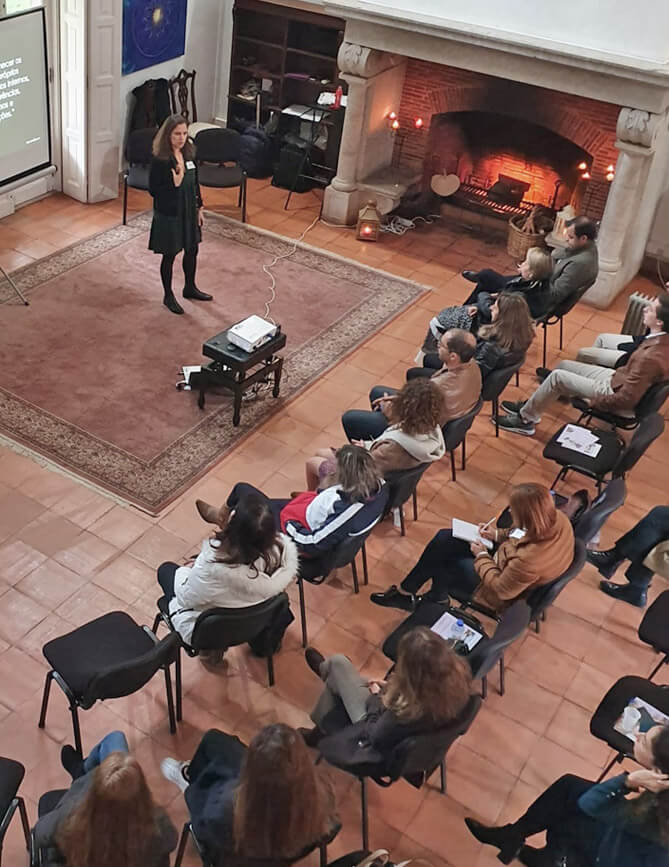We live in a world that pushes us “outward”. A world full of stimuli where we are constantly exposed to an avalanche of information, requests, offers, opinions and entertainments that compete for our attention. In the work environment, the fast pace, the pressure for results, the competitiveness, the complexity and the uncertainty of the scenarios, demand more and more from us. We often feel anxious, stressed, dissatisfied, frustrated, confused, lost and empty…
We easily lose the meaning of what we do, why we do it and who we do it for. We often become dependent on approval, recognition, comparison and competition with others. Focused on doing and having, we feel disconnected from who we are and what really matters to us.
This reality is easily recognized by many and we begin to become aware of its consequences and to look for a “way out” to feel better, happier, healthier, more “alive”. The search for a quick “way out” often leads us to resort to factors that mask suffering such as alcohol, drugs or other addictive substances. It also leads us to look for “external” solutions that we often do not integrate, accumulating information through courses, techniques, books, “gurus”…
Thich Nhat Hanh, Zen master and peace activist, proposed another way, stating that: “The way out is in”. This means that the solution to our problems and challenges, whether personal or global, is in the first instance within ourselves.
Thich Nhat Hanh suggests that the way is inward: instead of looking for external solutions to our internal problems it is essential to pause, reconnect with ourselves and with the present moment. Through the practice of Mindfulness, Thich Nhat Hanh invites us to stop running away from our suffering and to face it with awareness and compassion.
He illustrated this teaching using the example of a tree. “When we look at a tree during a storm, we see that its branches and leaves sway violently back and forth with the wind. We have the impression that the tree will not be able to withstand the storm. Like the tree, we sometimes get very agitated or angry when we encounter difficulties, but if we look deeper, we see that at the same time as the branches and leaves sway, a part of the tree is solid, still and deeply rooted in the ground. That part of the tree is not affected by the storm. The storm represents our external conditions, our circumstances, our environment. The branches and leaves represent our thoughts and emotions. The trunk and roots represent our true nature, our essence, our stability. We cannot control the storm, but we can control how we respond to it. We can learn to be like the trunk and roots of the tree, calm and grounded in ourselves, so that we can better face the challenging context in which we live.”
It is important to note that sometimes this “way inward”, although necessary, can be too demanding and should not be done alone, advising careful and specialized follow-up. It is also important to emphasize that “walking inward” is not a selfish act, on the contrary. It is a way of self-care and self-regulation, so that we can be more connected with ourselves and with others, cultivating presence, gratitude and compassion. Not masking reality, but preparing ourselves to face life as it is.”

